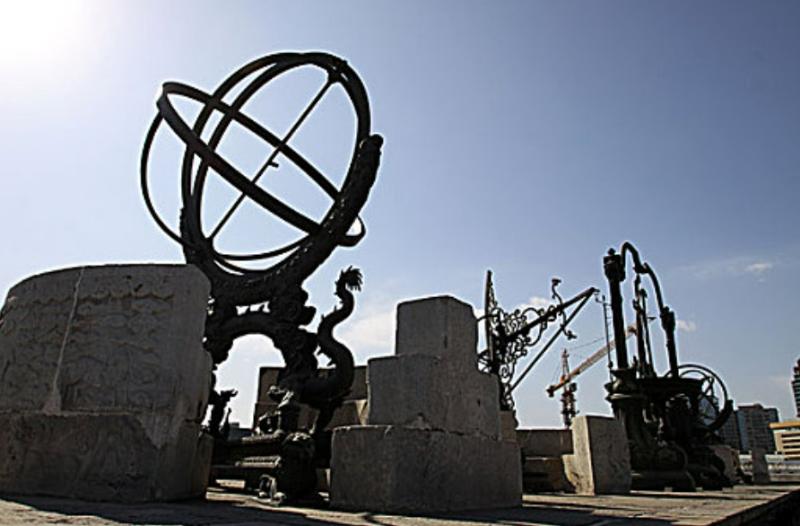The History of Beijing Ancient Observatory
I. Introduction
The Beijing Ancient Observatory, an ancient astronomical observatory standing in the midst of the ancient capital, is not only a witness to the development of ancient Chinese astronomy but also an important node for cultural exchanges between China and the West. The observatory was initially built in 1442 during the Ming Dynasty and expanded during the Qing Dynasty. In 1644, Europeans (Jesuits) carried out significant restructuring and introduced many new, more precise instruments. After hundreds of years of trials and tribulations, it still attracts numerous people interested in history and astronomy to visit.
Reference:Beijing Ancient Observatory
II. The Foundation and Construction in the Ming Dynasty
- Establishment Background
During the Ming Dynasty, with the stabilization of imperial power and the development of social economy, the demand for astronomical observations increased. To more accurately predict astronomical phenomena and formulate calendars, the Ming government decided to build an astronomical observatory in Beijing.

- Construction Process
In 1442 AD, the Beijing Ancient Observatory officially began construction. Architects utilized advanced technology and design concepts of the time to create this magnificent observatory. After several years of hard work, the ancient observatory was finally completed in the mid-Ming Dynasty and put into use.
- Initial Functions
During the Ming Dynasty, the Beijing Ancient Observatory was primarily used for astronomical observations and calendar making. Astronomers observed the starry sky day and night, recording changes in astronomical phenomena, providing crucial time references for agricultural production and national management in the Ming Dynasty.
III. The Expansion and Restructuring in the Qing Dynasty
- Expansion Background
After the Qing Dynasty took over Central China, it expanded and renovated the Beijing Ancient Observatory to consolidate its rule and strengthen centralization. The Qing government hoped to further improve the accuracy of astronomical predictions by improving astronomical observation facilities and techniques.
- Content of the Expansion
During the Qing Dynasty, the Beijing Ancient Observatory underwent large-scale expansion and renovation. Astronomers added new observation instruments and equipment, improving observation accuracy and efficiency. At the same time, they repaired and reinforced the observatory's buildings, making them more robust and durable.
- The Development of Qing Astronomy
With the completion of the expansion and renovation of the Beijing Ancient Observatory, Qing astronomy also experienced rapid development. Astronomers utilized new observation equipment and techniques to conduct a series of significant astronomical observations and research, achieving many important scientific results. These achievements not only enriched the knowledge system of ancient Chinese astronomy but also provided valuable references and insights for later scientific research.
IV. The Restructuring and Introduction of New Technology by the Jesuits
- The Arrival of the Jesuits
In 1644, with the establishment of the Qing Dynasty and the arrival of Western missionaries, the Beijing Ancient Observatory ushered in new development opportunities. The Jesuits brought Western astronomical knowledge and technology, injecting new vitality into the ancient observatory.
- Significant Restructuring and Introduction of New Instruments
Under the guidance of the Jesuits, the Beijing Ancient Observatory underwent significant restructuring and renovation. They introduced many new, more precise instruments and equipment, such as telescopes and quadrant instruments, greatly improving observation accuracy and efficiency. At the same time, they also improved and upgraded the original observation instruments to better meet the research needs of modern astronomy.
- The Exchange and Fusion of Chinese and Western Cultures
The arrival of the Jesuits not only brought Western astronomical knowledge and technology but also promoted the exchange and fusion of Chinese and Western cultures. They collaborated with Chinese astronomers to study astronomical issues, sharing their research results and experiences. This exchange not only promoted the development and progress of astronomy but also enhanced understanding and friendship between the Chinese and Western peoples.
V. Conclusion
The history of the Beijing Ancient Observatory is a legendary and brilliant one. From its foundation and construction in the Ming Dynasty to its expansion and restructuring in the Qing Dynasty, and then to the introduction of new technology and the exchange and fusion of Chinese and Western cultures by the Jesuits, it has witnessed the development of ancient Chinese astronomy and showcased the significant achievements of cultural exchanges between China and the West. Today, when we stand in front of this ancient observatory, we can still feel its historical atmosphere and scientific spirit.
QA 1
Q: When was the Beijing Ancient Observatory initially built, and by which dynasty?
A: The Beijing Ancient Observatory was initially built in 1442 during the Ming Dynasty.
QA 2
Q: How did the Jesuits contribute to the Beijing Ancient Observatory?
A: The Jesuits contributed significantly to the Beijing Ancient Observatory by carrying out major restructuring and introducing many new, more precise instruments and equipment such as telescopes and quadrant instruments. This greatly improved the observatory's observation accuracy and efficiency. Their arrival also promoted the exchange and fusion of Chinese and Western cultures in the field of astronomy.
note: This return of all, without the author's permission, may not be reproduced